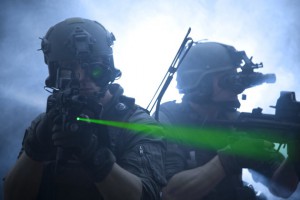Why you should get thermal binoculars
Whether you are hunting in darkness or just camping outside at night, thermal binocular can come in handy to help you see the environment vividly. To function well in the dark, thermal binoculars amplify the small amount of light that is present in the dark or they illuminate using the infrared light.
Thermal binoculars were initially used for military purposes only. However, as technology continued to advance, these binoculars became more and more accessible and affordable. At current moment Thermal binoculars invaded the consumer market.
Thermal binocular works in two ways: thermal imaging and light amplification. Light amplification is whereby the machine enhances moonlight, infrared light as well as starlight.
On the other hand, heat vision or thermal imaging depends on infrared light as it absorbs heat that is produced by people, objects, and animals in the visual range of infrared thermal binoculars.
What to look for in thermal binoculars
There are four generations of thermal binoculars, and each device features various set of properties or rather capabilities.
Before purchasing a thermal binocular, there are some factors you need to now, such as price, durability, warranty, etc. However, when comparing different thermal binoculars, the following are the things you need to consider.
Gain
This basically means the ability of the goggles to enhance images the more it gets darker. Generally, thermal binoculars become more faulty as the intensity of light dwindles as well as the distance of view increases.
Some thermal binoculars compensate it by using infrared light as well as lengthy lenses. However, these are effective up to a given distance because as the gain increases the clarity of the vision reduces.
The ideal thermal binocular can boost gain even in low light without compromising the focus.
Range
To capture images that are very far during the night, thermal binoculars require a magnification factor that is more than 1X, good magnification is 4X or even 8X. To achieve this, you need a strong and long lens. Sadly, long lenses are not as effective as short lenses, they mostly perform poorly.
So, to capture objects that are far away and in the dark, you need to have a high-speed lens that features a moderate magnification. These types of lenses are able to capture more light and have longer ranges and higher gains.
Image quality
Thermal binoculars release monochromatic images because it is easy for the human eye to perceive contrasts in white, red, green color than any other.
The best vision image is that which remains sharp not only at the center but also at the edges. To avoid distortion and blurring, the thermal binoculars must be able to produce high definition images with high resolution.
Mounting gear
Thermal binoculars are worn overhead, and for that reason, they must be comfortable and lightweight. Straps and other gears shouldn’t irritate your skin and the rims shouldn’t dig deep into your eyes.
This article comes from thermal-binoculars edit released
